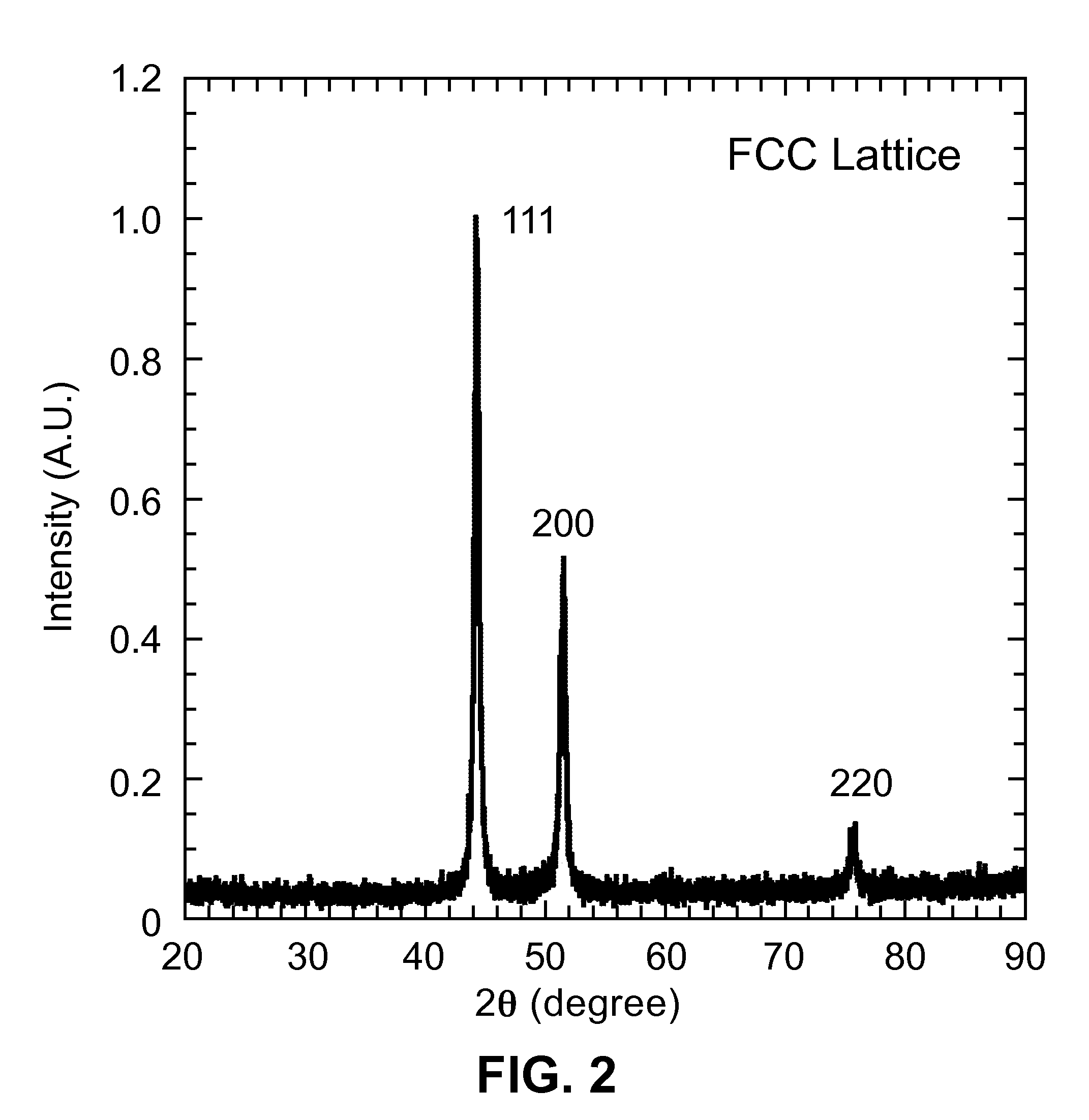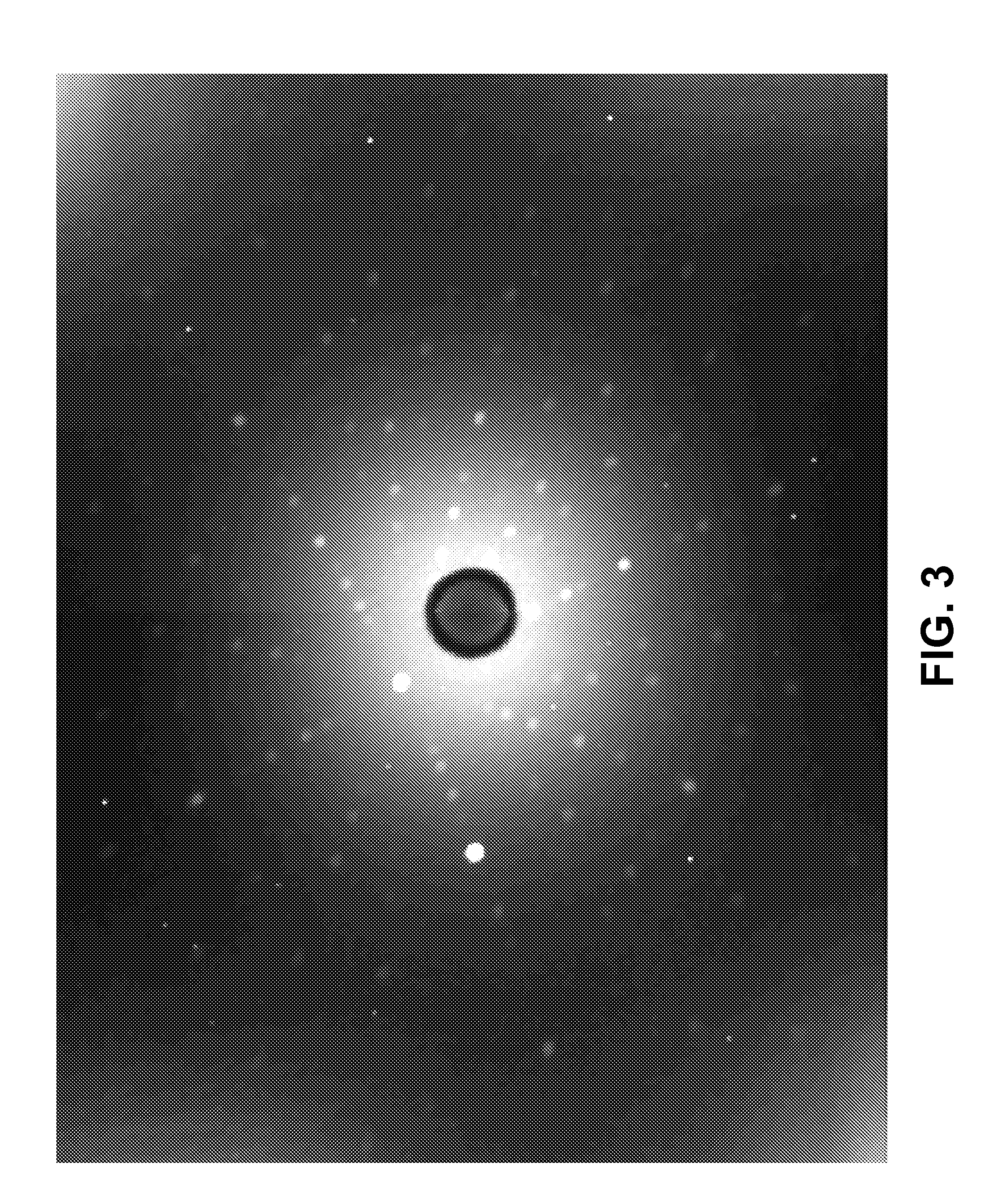Multi-Component Solid Solution Alloys having High Mixing Entropy
a technology of solid solution and multi-component alloys, which is applied in the direction of metal borides, boron compounds, chemistry apparatus and processes, etc., can solve the problem of high lattice distortion
- Summary
- Abstract
- Description
- Claims
- Application Information
AI Technical Summary
Benefits of technology
Problems solved by technology
Method used
Image
Examples
Embodiment Construction
[0025]The present invention achieves increased ΔSmix by increasing the number N of the elements but still remain as a solution. However, most metals cannot be completely mixed together to form a single phase solid solution, even in binary alloys due to phase separation (e.g., Cu—Ag), and formation of intermetallic compounds (e.g., Fe—Nb). Phase separation occurs in liquid to solid transition (e.g., eutectic, peritectic and monotectic reaction) as well as solid to solid transition (e.g, eutectoid and spinodal decomposition). To date, most of HEAs previously studied were based on metallic elements of Fe, Co, Ni, Cu, Ti, Nb, Mo, V, Cr, Mn and Al. X-ray diffraction (XRD) shown in FIG. 2 and microstructure observations shown in FIGS. 1, 3 confirmed that 4-element FeCrNiCo alloy can form single phase solid solution alloy with Face-Centered-Cubic (FCC) structure and moreover single crystals of this multi-element alloy can be grown in an optical floating zone furnace.
[0026]Alloys in accorda...
PUM
| Property | Measurement | Unit |
|---|---|---|
| Percent by atom | aaaaa | aaaaa |
| Percent by atom | aaaaa | aaaaa |
| Percent by atom | aaaaa | aaaaa |
Abstract
Description
Claims
Application Information
 Login to View More
Login to View More - R&D
- Intellectual Property
- Life Sciences
- Materials
- Tech Scout
- Unparalleled Data Quality
- Higher Quality Content
- 60% Fewer Hallucinations
Browse by: Latest US Patents, China's latest patents, Technical Efficacy Thesaurus, Application Domain, Technology Topic, Popular Technical Reports.
© 2025 PatSnap. All rights reserved.Legal|Privacy policy|Modern Slavery Act Transparency Statement|Sitemap|About US| Contact US: help@patsnap.com



